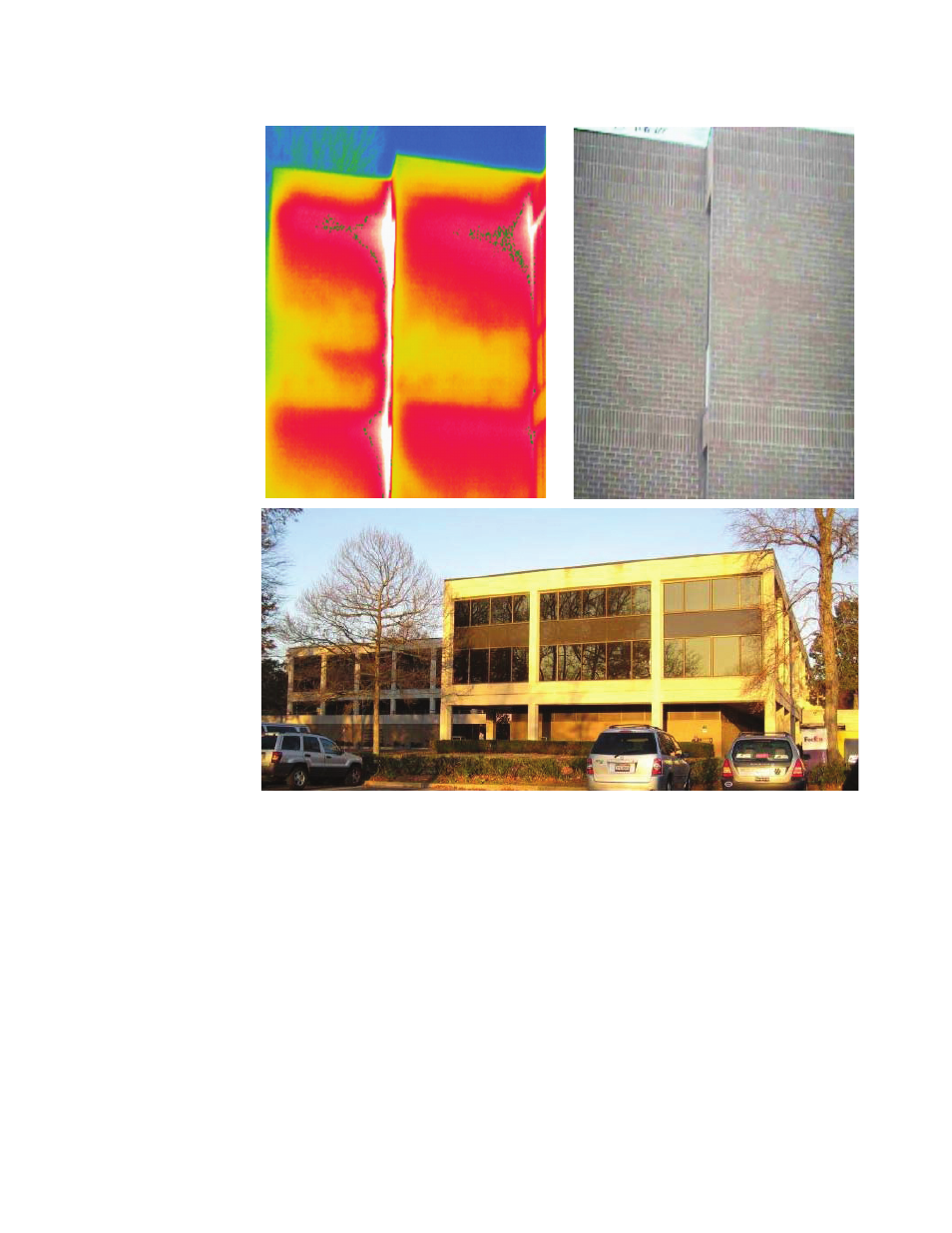Retrotec USACE User Manual
Page 134

D4 ENERGY & PROCESS ASSESSMENT PROTOCOL
D.1.1.3 Thermal Bridges in the Wall (Waste)
Figure D5. Thermal image of the residential building wall with thermal bridges (top left, top
right), concrete structural frame of the offi ce building creates thermal bridging (bottom).
Building envelope details that have a lower resistance to heat fl ow than the
main construction are often referred to as thermal or heat bridges (Figure
D5). Thermal bridges decrease interior surface temperatures and signifi -
cantly increase heat losses and gains; they also create conditions for condensa-
tion, resulting in mold and mildew inside and outside the building envelope.
Thermal bridges are often formed by steel or concrete beams and columns
incorporated in exterior walls or roof construction. Metal ties in cavity walls
are another type of thermal bridge commonly found in masonry construction.
Serious problems may also occur at metal window frames and sash and at metal
curtain wall mullions, which either partially or completely bridge the wall and
often present a fi n exposed to the outside (W.P. Brown and A.G. Wilson, August
1963, Canadian Building Digest, CBD-44. Thermal Bridges in Buildings).
